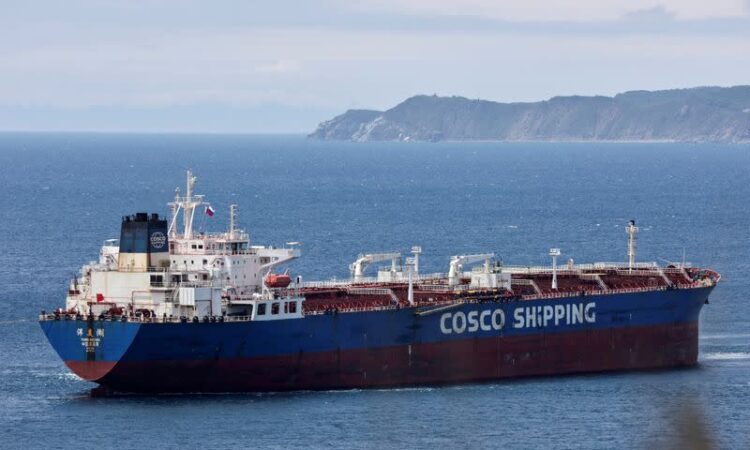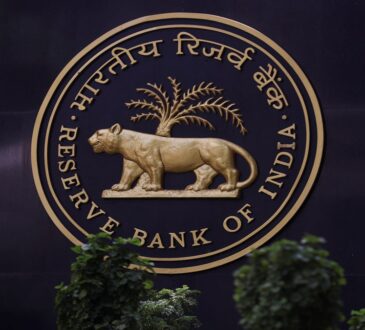
Russia’s oil trading with Asia has boomed since the Ukraine conflict, but one of its lucrative routes faces a challenge because of difficulties paying for fuel in currency other than dollars.
While the US dollar has long been the preferred method of payment for oil, political considerations have undermined efforts to find alternatives.
The problems flared when India – which has become Russia’s biggest buyer of seaborne oil since European customers retreated – insisted in July on paying in rupees and the trading activity nearly fell apart, according to three sources familiar with the matter.
The sources, who requested anonymity, said the Russian oil suppliers – who could not be named because of the issue’s sensitivity – could not do deals in Indian rupees because of informal guidance from the Russian central bank it would not accept the currency.
ALSO SEE: Big Shareholders ‘Stopped From Selling Beijing Exchange Stocks’
Limited use seen for Indian rupees
One Russian banking source close to the Russian central bank said receiving revenue in a non-convertible currency with little value outside India was “pointless”. Russia has limited opportunities to spend rupees as its imports from India are insignificant, another source said.
The Russia central bank did not respond to requests for comment.
Around mid-August, at least two major Russian oil companies threatened to divert around a dozen tankers carrying up to a million tonnes of oil that were heading to India to other destinations, according to two of the sources.
As a temporary solution to the clash involving Indian deals, the cargoes were paid for in a combination of the Chinese yuan, the Hong-Kong dollar as a transition currency into the yuan and the UAE dirham, which is pegged to the US dollar, 10 trading sources and officials said.
They said, however, the problem remained of finding a viable alternative to the dollar, and that the problems affect buyers in Africa, China and Turkey which have become top buyers of Russian oil.
The biggest issue, however, concerns India, which has been buying more than 60% of Russian seaborne oil, according to LSEG data and Reuters calculations. It is the biggest overall buyer of seaborne Russian crude after China.
US imposes first sanctions
The problems are likely to worsen as scrutiny on the trade increases. Washington imposed the first sanctions on owners of tankers carrying Russian oil priced above a Western price cap in recent weeks, the first enforcement of the cap since it was introduced late last year.
Since Western sanctions imposed on Russia in February last year, Moscow has shifted from transactions in dollars and euros, the world’s dominant currencies, and is largely locked out of the international banking system.
According to five traders involved, less than 10% of Russia’s output of roughly 9 million barrels of oil per day (bpd) is sold in dollars and euros.
The Russian central bank cannot operate in dollars because of sanctions, and while Russian exporters theoretically can use the currency, avoiding it has the advantage of making it harder for the United States and other Western governments to monitor their trade.
The alternatives, however, lead to high levels of risk for both parties to a deal.
India in the first months of this year owed about $40 billion to Russia for oil and other supplies, according to four trading and banking sources, who said the amount was now significantly lower without giving a precise details.
The Russian central bank also declined to give details.
Indian trade deficit with Russia widening
Doing business in rupees is particularly difficult for Russia. India encourages rupees to be spent on its territory and has imposed punitive exchange rates on converting rupees into other currencies, amounting on occasions to over 10% of the amount converted, according to two Russian sources.
The situation could ease if Russia imported more goods from India, which could be paid for in rupees.
Instead, India has been importing more from Russia, while Russia has been a major importer of cars, equipment and other goods from China.
India’s imports from Russia reached $30.4 billion in April-September, with its trade deficit with Moscow widening to $28.4 billion compared with about $17 billion in the same period last year, according to the data posted on the Indian commerce ministry website.
Ivan Nosov, head of the Indian branch of Russia’s top state bank Sberbank, said Russian exporters will have to help India to increase its exports.
“If you help increase Indian exports, there will immediately be a lot of help from various Indian associations. You create a company in India, do a small localisation and you will get more opportunities,” he said.
India’s top refiner Indian Oil Corp is struggling to settle some payments, mainly for the purchase of Russia’s light, sweet Sokol grade from the Sakhalin 1 project.
The IOC has said it has been unable to pay for the Sokol deliveries because the company supplying the grade has yet to open an account in UAE dirhams to receive payment, a source said.
The IOC did not respond to requests for comment.
Moscow prefers yuan
Russian officials and oil executives have pressed Indian buyers to pay in Chinese yuan, which for Russia is a more useful currency.
For India, using the yuan is highly sensitive, although Indian private refiners have switched back to the yuan due to the lack of other options since the clash earlier this year, the sources said.
Indian state refiners have turned to the UAE dirham, but that has been complicated by additional clearing requirements as Washington’s tougher line makes other governments wary.
From October, several UAE banks have tightened control over Russia-focused clients to ensure compliance with the price cap, according to five oil trading and bank sources.
At least two UAE banks have introduced price cap compliance declarations for the clients involved in Russian crude, oil products and commodity trading, the sources said. They declined to name the banks.
- Reuters with additional editing by Jim Pollard
ALSO SEE:
Row Over Paying Yuan for Russian Crude Delays Indian Oil Deals
China, India Imports of Russian Oil Surge to Record Highs
Indian Firms Using UAE, Asian Currencies to Buy Russian Coal
India-Russia Oil Deals Erode Dollar’s Currency Dominance
Russia Ships Sanctioned Oil to Asia in Chinese Supertankers




